Here are 9 of my favorite Mexican treats to share with the whole family during the holidays and the best one can be unwrapped like a present
Pauline Villegas

- Being raised in a Mexican American household, the best thing about the holidays was always the food.
- Whether you buy them or make them as a family, these eats can be enjoyed all season long.
In my Mexican American family, the holidays are the perfect time to feast with loved ones.
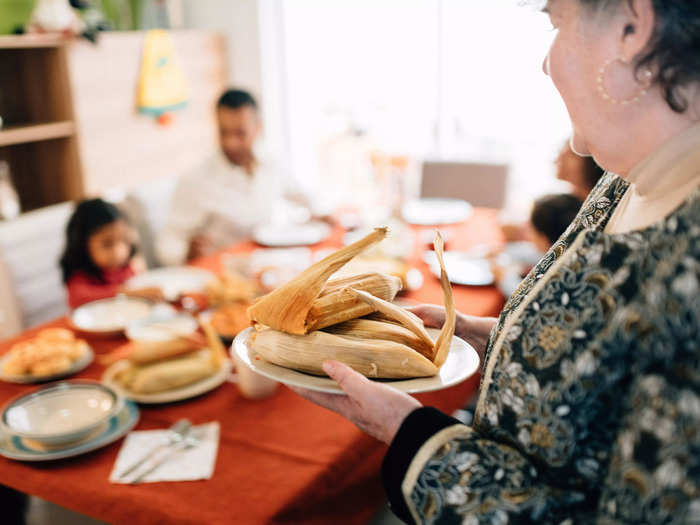
Growing up, the end of the year meant enjoying seasonal treats together as a family. For me, the holiday season also symbolizes spending quality time with loved ones. Since I moved away from my home in Los Angeles, these traditions hold an even more special place in my heart.
Now that the holidays are here, I'm looking forward to returning home to Southern California and digging in on all my favorite holiday treats with my family. From cozy, spiced Mexican hot chocolate to homemade tamales, these are nine of my favorite Mexican American treats to enjoy throughout the holidays.
My family and I love making champurrado together, a hot corn flour-based beverage that's reminiscent of hot chocolate.
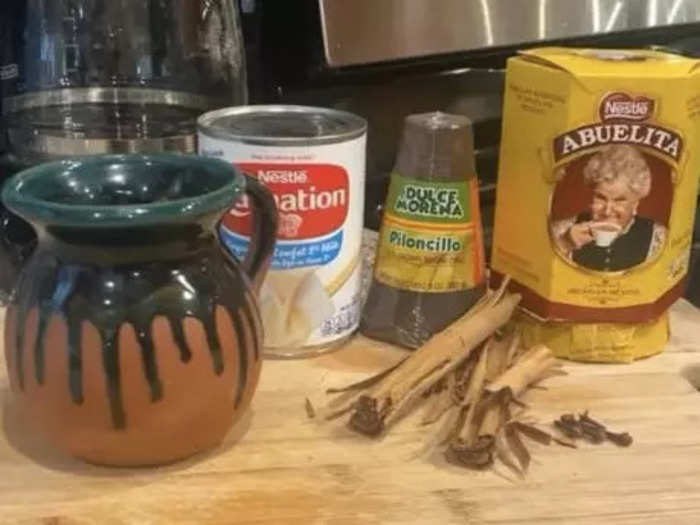
As the holidays approach, there is nothing better than a steaming cup of champurrado. The thick, hot beverage is made by heating masa (corn flour) with Mexican chocolate, cinnamon, piloncillo (whole cane sugar), and milk.
Dating back to pre-colonization times, champurrado was initially made by the Aztecs for ceremonies and rituals, according to the Chicago Tribune.
Ana Frias' food blog Muy Delish has a recipe that is easy to make, or the toasty drink can be purchased at most Mexican bakeries and street vendors. For those with a sweet tooth, you can dip pan dulce, or sweet bread, into your champurrado.
Mexican-style tamales are the perfect meal for the holidays since you have to unwrap them like a present.
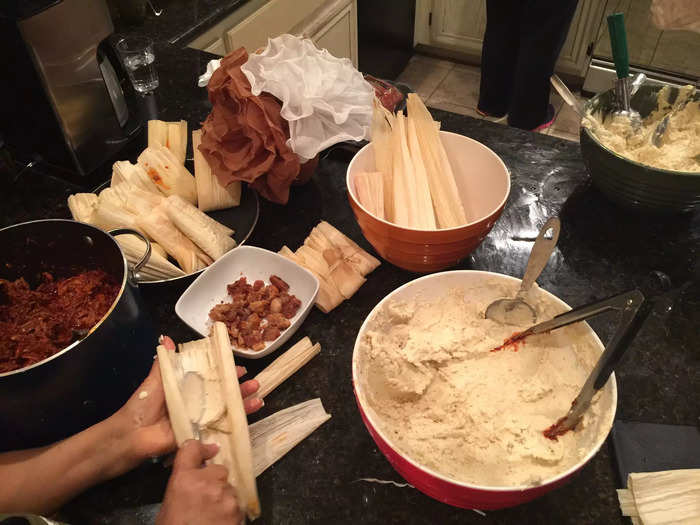
Tamales are Mesoamerican rolls of maza stuffed with a variety of fillings that are typically steamed in a corn husk. The fillings range from sweet sugared pineapple recipe, found on to pork marinated in red salsa. Respective recipes can be found on food blogs Mexican and Meatless, and Isabel Eats by blogger Isabel Orozco-Moore.
No matter what you fill tamales with, these easy-to-make treats can be delicious for the whole family. My family makes and enjoys tamales on Christmas Eve every year, and leftovers are the ideal gift to unwrap on Christmas morning.
Traditional Mexican-style buñuelos are thinly fried dough dusted with sugar, cinnamon, and drizzled with caramel.
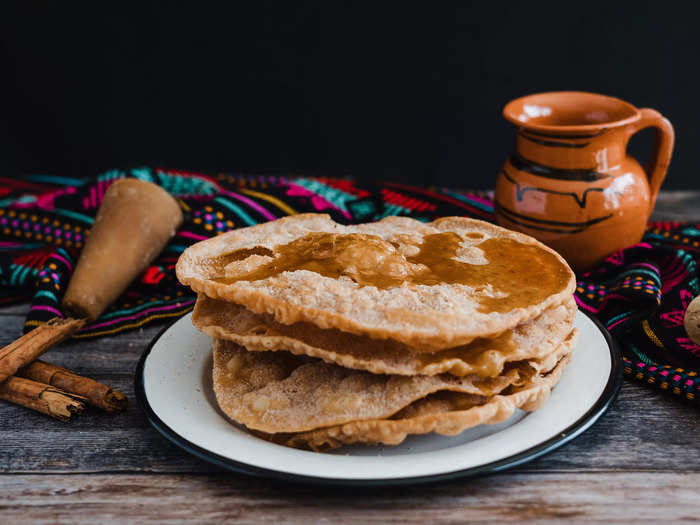
This crunchy, sweet treat is the perfect dessert to enjoy during the holidays. Buñuelos are made around the world in countries like Spain, Colombia, Mexico, Turkey, and more. Though the donut-like treat originated in Spain, according to The New York Times, Mexico has a specific take on the dessert.
Mexican-style buñuelos are made by taking flour dough and rolling it until it's paper thin. When the dough is fried, it puffs up before hardening. Once the buñuelo cools, it is sprinkled with sugar and cinnamon.
This simple recipe from food blogger Mely Martinez is easy and affordable when you're in need of a comforting sweet treat.
In November, when Día de los Muertos comes around, pan de muerto is enjoyed in Mexico to honor the dead.
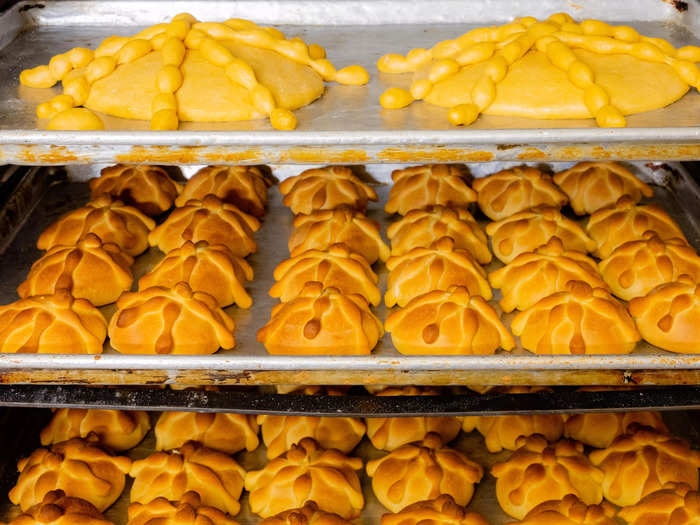
From November 1 to November 2, Mexicans around the world celebrate Día de los Muertos, or Day of the Dead. In their honor families make pan de muerto, a take on pan dulce, or sweet bread, which is made in bulk and shared with loved ones. Martinez's pan de muerto recipe on her blog, Mexico in my Kitchen, has a dash of orange zest that gives the treat its unique flavor.
According to The New York Times, pan de muerto is meant to nourish the souls of the deceased when it is offered to them.
To many Mexican families, including my own, the design atop the bread is meant to represent the bones of loved ones who have passed. Families usually place pan de muerto on the ofrenda, or Día de los Muertos altar, made to honor the deceased, according to NPR.
Red or green pozole is a Mexican soup that my family eats together on Christmas day and other special occasions.
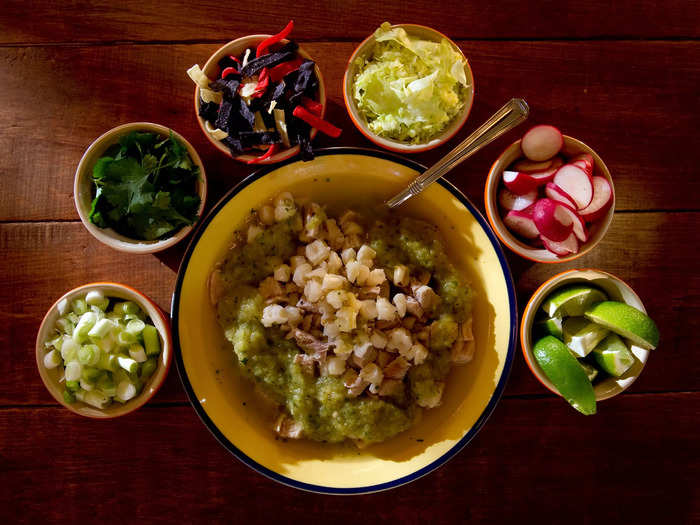
Pozole is a traditional Mexican soup made with hominy, pork, chicken, seasoning, and chilies boiled together. The flavorful, spiced stew is normally enjoyed by large groups of people.
Since pozole is a warm, hearty meal, it is especially consumed during the winter holidays. Pozole can be made with green salsa or red salsa and can be topped with cilantro, tortilla chips, cabbage, reddish, and lime.
A simple recipe for authentic, red pozole can be found on the food blog, My Latina Table.
Ponche Navideño, or Christmas punch in English, is a fruity traditional Mexican punch served hot and enjoyed during the holidays.
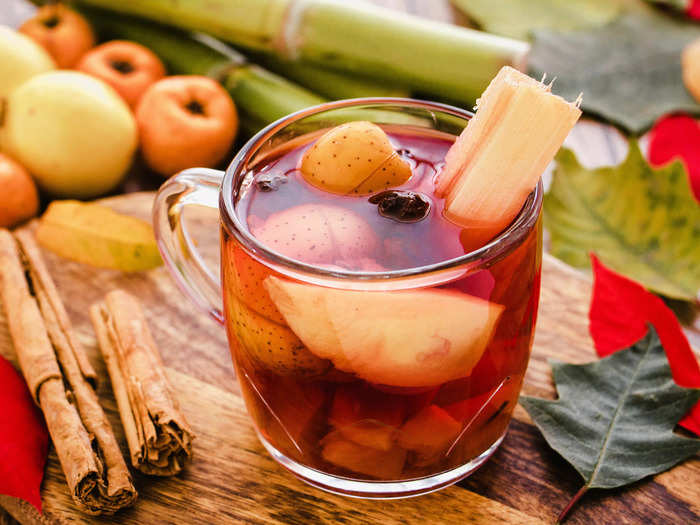
Ponche Navideño first originated in India, according to food website LAist. The Indian drink, called pãc, directly translates to "five" due to the punch's five core ingredients: wine, sugar, lemon, tea, and water.
The Mexican take on the punch is enjoyed from December 16 to December 24, celebrating posada. The Mexican Posada is a nine-day celebration in Mexico and other Latin American countries that honors the biblical trip that Mary and Joseph took from Nazareth to Bethlehem, according to travel agency Journey Mexico's blog.
Ponche Navideño is made in Mexico with tejocotes (Hawthorne apples) that can be found in most Mexican grocery stores and taste like a tart plum. In addition to tejocotes, you'll need guavas, pears, prunes, oranges, tamarind, panela sugar, and cinnamon sticks. According to Yvette Marquez's food blog Muy Bueno, all you need to do is boil the ingredients in hot water and enjoy. For an extra kick, brandy or tequila can be added.
Mexican hot chocolate is one of my favorite beverages to drink on a cold winter's day.
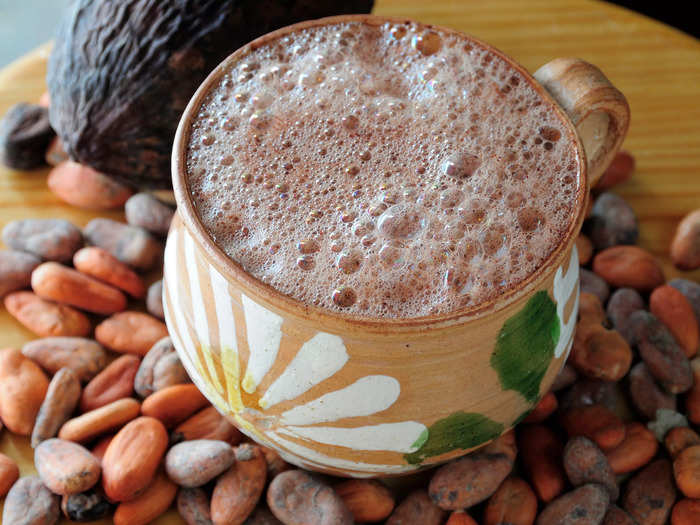
The biggest difference between classic hot cocoa and the Mexican take on hot chocolate would have to be the cinnamon spice kick. Mexican hot chocolate differs from champurrado in its thinner consistency and milk base.
This beverage is made with spiced Mexican chocolate, cinnamon sticks, cornstarch, and milk. The sweet drink is best to enjoy during the wintertime and can be paired with buñuelos, pan dulce, or churros.
Churros con chocolate is traditionally a Spanish snack but was a reoccurring treat in my household during the holidays.

According to the BBC, churros were brought to Latin America by Spain. However, their chocolate counterpart can be credited to ancient Mexican civilizations. There is speculation that conquistadors brought the recipe for chocolate back to Spain, where its popularity spread throughout Europe, according to the History Channel,
Churros are fried, cinnamon-dusted dough that is traditionally enjoyed with a thick chocolate sauce. For those with a sweet tooth, this dessert is the perfect bookend for a large family meal.
Today, the two-part treat is enjoyed around the world and reminds me of Christmas time in Los Angeles.
On January 6, rosca de reyes, or king's bread, is shared throughout Mexico and parts of the United States to celebrate Three King's Day.
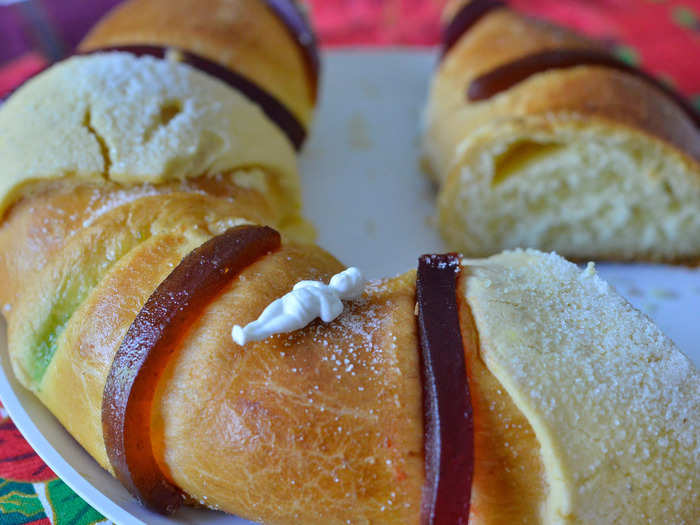
Three King's Day is a Catholic holiday celebrated in Spain and throughout Latin America, according to Newsweek. The holiday honors the biblical tale of the three kings or three wise men, who visited Jesus after he is born.
To commemorate the day, Mexican culture enjoys rosca de reyes with the entire family. The tradition stands that on the morning of January 6, everyone in the family cuts a slice of the circular sweet bread topped with fruit. Baked into every rosca de reyes is a miniature Jesus figurine.
If you cut the slice that contains the baby Jesus, it is considered good luck for the year ahead. In addition to your newfound luck, you also have to throw a tamale party each year on February 2, the Día de la Candelaria.
Moreso a fun family activity than a dessert, rosca de reyes is a family-centered tradition that I look forward to every year.
Popular Right Now
Popular Keywords
Advertisement